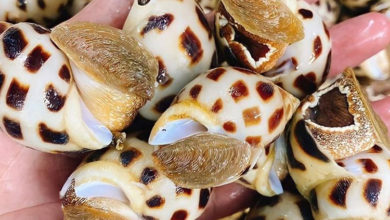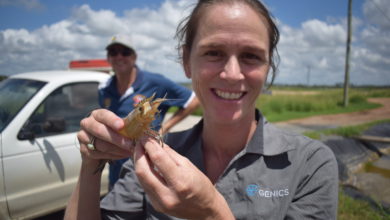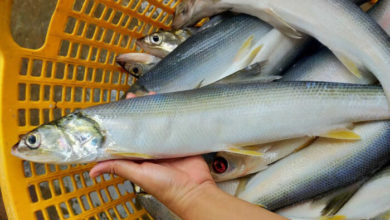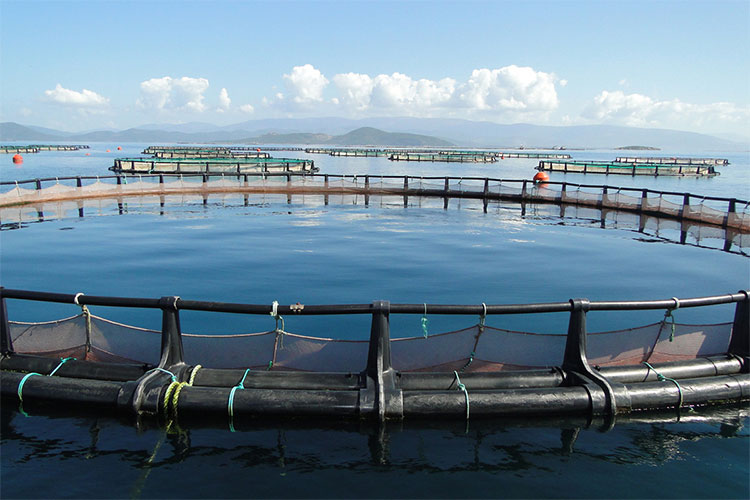Marine fish culture export:Projected to reach 10 billion USD by 2050
This is the number targeted by Ministry of Agriculture and Rural development for marine culture in the future and drafted in Vietnam’s strategy in marine culture by 2030, towards vision 2050. The draft is being delivered for comments before submission to the Government.
Target on the world’s top 5
Getting the best out of its strength, marine culture is targeted for sustainable large-sized production industry which will assure local consumers and exporters of fully safe, high quality and labeled goods.
The target is to develop and increase in number of large scale companies that enter into offshore aquaculture in key provinces like Kiên Giang, Phú Yên, Khánh Hòa, Quảng Ninh and Bà Rịa – Vũng Tàu. Total area for marine culture is projected to reach 270,000 hectares with 6,000 hectares of offshore; 14,000 hectares of coastline and 250,000 hectares of tideflat and mainland. The volume of total cages will grow to 8 million cubic meters, leaving the production around 750,000 tons with 200,000 tons of marine fishes, 400,000 tons of mollusc, 150,000 tons of algae and 60,000 tons of crustacean. Export value is expected to reach approximately 1.5 billion USD.
By 2030, total marine culture area reaches 300,000 hectares with 30,000 hectares of offshore, 20,000 hectare of coastline, 250,000 hectares of tideflat. The volume of cages increases 9 million cubic meters. Production might be up to 1.45 million tons, 600,000 tons of which is marine fishes, 500,000 tons dried algae, 500,000 tons mollusc, 100,000 tons crustacean and 50,000 tons other species. Export value is aimed at 5-8 billion USD, satisfying 70-80 percent of marine culture infrastructure, 70-80 percent of demand in broodstock, creating 80-90 percent of material trading value in offshore fishing and providing 2 million jobs with average personal income standing at three or four times it is now.
Towards vision 2050: Vietnam’s marine culture would be stable and advanced with technology and science management. Technology in marine culture may contribute 12-15 percent of GDP. Production in marine culture is expected to reach 3 million tons per year with trade and export value more than 10 billion USD.
Cultivated subject
As for marine fishes, the project is to concentrate into high economic value species like grouper, pompano, red snapper, sea bream, sea bass, cobia, tuna, and marine ornamental fish.The aquaculture is applied with industrial and advance method for product safety assurance and climate change adaptation in the coastline and offshore land.
As for mollusc, paying attention to high economic and competitive species like clam, oyster, blood cockle, sweet snail, geo-duck, mussel and abalone. Marine culture along the coastline is carried out in industrial scale under supervision, geographical indication and traceability, obtaining product safety assurance and climate change adaptation.
Besides, dark green algae, brown algae and red algae should be concentrated. Micro algae cultivated with industrial method, certified or conduced in combination with other species.
Mollusca are lobster, crab and sentinel crab. Lobsters are cultivated in the modern industrial cages for technical requirement satisfaction, product safety and environment assurance, using RAS system and compound feed. Crabs and sentinel crabs are applied with organic farming and rotation with other species in ponds.
Comprehensive solution
A policy of marine area assignment and preferential policy for individuals and organizations working in marine culture should be introduced, say in the terms of tax and fee. Particularly, income tax should be reduced for corporates working in the fields, which are being prioritized for investment attraction, such as hatchery, offshore aquaculture, and complete feed production. Import tax should be adjusted in favor of corporates applying high technology in marine culture and importing equipment for production. Fees and charges might be reviewed and adjusted together with revoking unsuitable documents related to fee and charges in fisheries.
Besides, brand name and trade promotion should be properly concentratedand product value chain be built for manufacturing. Marine culture projects should be planed such as broodstock development program, research and transferring of science and technology for marine culture period 2020-2030 program, and offshore aquaculture technology in cages.
VFM






